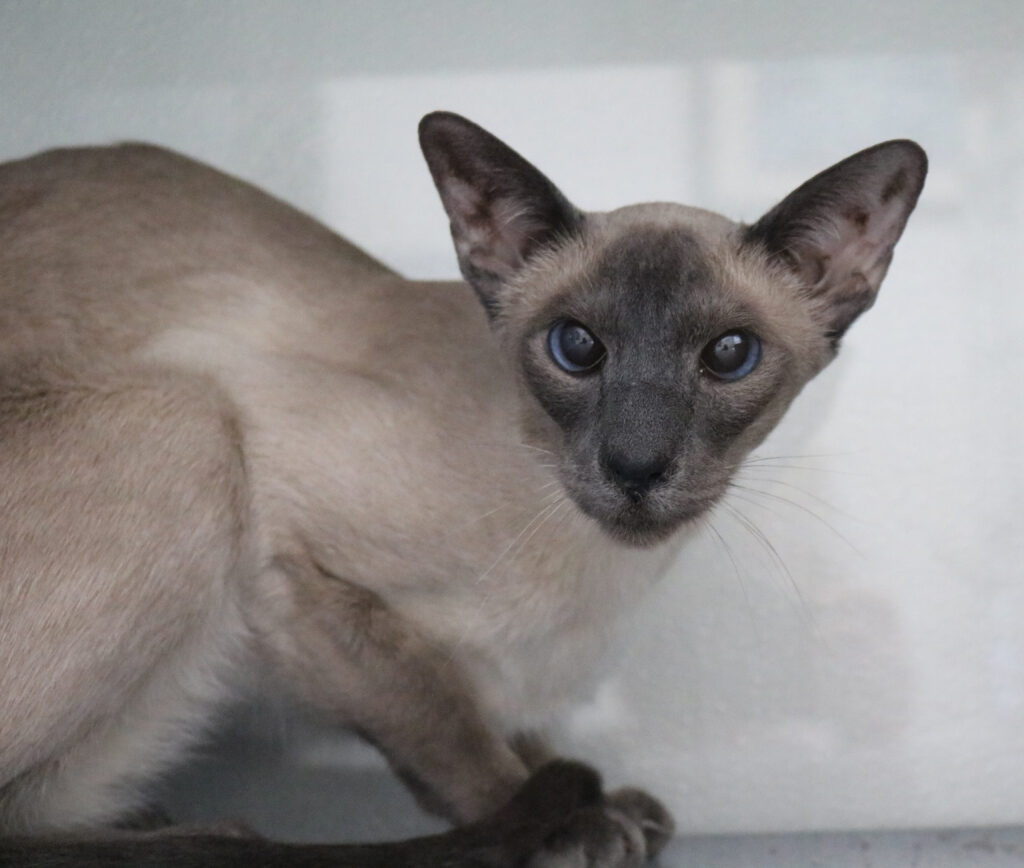In Part 1 (https://siriouslysiri.com/2021/12/27/out-of-the-box-experiences-part-1/) we talked about some of the medical and physical aspects of litterbox misbehavior, and honestly, when working with a cat with litterbox issues, I am always hoping the issue is dislike of the litter or dislike of the box location – a quick change and the problem is solved. Start with the easy, possibly the most obvious – get medical issues checked out, and if you get an all clear, move on to the physical aspects of litter type, box type and location – as these can be easy fixes. If, however, one has ruled out these things, then we need to delve into the emotional aspects of litterbox misuse, a much more complex matter.
In this post, we’ll look at several psychological influences – human/cat interactions, dog/cat interactions, and finally, cat/cat interactions. Keep in mind that there may well be more than one of these conflicts at play. (In one of my next posts, I’ll discuss single cat issues, including litterbox).
Human/cat interactions: In many of the litterbox scenarios we encountered, the cat belonged to one person, who then partnered with another person: the cat becoming third fiddle. If the newest family member happens to love cats and makes a concerted effort to become buddies with the cat, things can often work out. If not, the cat may feel jealous they are no longer the priority and may express their dislike of the situation via litterbox issues. This becomes a tough scenario to resolve, simply because the new human in the equation must, again, not only like cats, but be really vested in establishing a close relationship with the cat. Becoming the cat’s caretaker (feeder, toy person, treat-giver) is one way to endear oneself to the cat. Additionally, it is important to be sure the cat is not excluded from situations or time slots that used to belong to them – for example, not closing the cat out of the bedroom, if, for years, the cat was allowed to sleep with its person. The same scenario can occur with the birth of a new baby, diverting attention away from the cat. Just as one should do when having a second child, be sure to pamper the cat, who was there first, with lots of time and attention in order to avoid any problems with jealousy.
Dog/cat interactions: While a few cats may be terrified of dogs due to previous bad experiences, most cats can learn to coexist with a new canine presence – provided the dog does not torment the cat. It goes without saying that chasing, nipping, barking at or cornering the cat in any way shape or form is not going to make the cat happy. If one is adopting an older dog and bringing it into a cat household, make sure the dog is cat-tested prior to committing to the dog. You may also want to have a friend bring their dog for a visit so you can judge your cat’s reaction. If it’s a young dog, training the dog from the start as to how to behave around the cat is important. Be sure to provide the cat with places to go that the dog cannot get to – gating off a room or providing plenty of cat trees for the cat to climb in order to be out of reach of the dog. Of course, making sure the dog is not guarding whatever location the cat has chosen is key, and ensuring the cat can get to their food, water and box is also obvious. Suffice it to say, if the cat feels threatened by the dog in any way, they are very likely to choose alternative locations for elimination. Additionally, a cat that is baseline terrified of their own shadow is very likely to be terrified of a new dog, so think twice before adding more animals if your cat has a victim/pariah personality. Remember, when it comes to pets, you are the one choosing the makeup of your furry household – the cat has no say in the matter – so plan carefully.
Cat/cat interactions: This, I feel, is where many of the litterbox issues stem from, and I’ll start with something we talked about in Part I. If you have multiple cats, and you are experiencing litterbox issues, you must, you must, you must – have multiple litterboxes in multiple locations. The two most common reasons we found that cats did not want to use the box in a multi-cat household were a) that the box had already been used by another cat (remember the porta-potty scenario) and b) the cat was afraid to use the box because either it was being guarded by the bully cat, or the use of it resulted in being ambushed by the bully cat. If you are thinking that you don’t have space for more litterboxes (for whatever reason), then you shouldn’t have multiple cats. The number one reply we found when counseling adopters who were dealing with litterbox issues was that they didn’t have the space to add more litterboxes – yet they were able to add more cats. That doesn’t work.
Ideally you have done some matchmaking of cat personalities when you added additional cats to your household, so you don’t have a bully/pariah cat situation. (An article on matchmaking coming soon). Perhaps the personality pairing was unavoidable (you couldn’t tell as a kitten what the cat’s personality would be like as an adult, you combined households which involved combining pets) and you have one cat that is dominating the other. Realize that cats develop their feeling of security by establishing a territory that belongs to them. If I asked you which locations in your home are key to your sense of security, the answer is likely to be where you sleep, where you eat, or where you eliminate. Not having a comfortable place to do one of those three things is very stressful. Cats want to be able to sleep undisturbed by others. They want to know their food and water are easily found and available to them when they are hungry. And they want to be able to eliminate on their own time, in their own space, without feeling threatened. If you only have one litterbox, and it is down a dead-end hallway, a victim cat may be unlikely to use it, as they know there is no escape if they get cornered. By offering multiple locations, you make it difficult for the bully cat to guard them all, and increase the possibility of a stress-free litterbox experience. (Putting a collar with a bell on a bully cat will also help alert the victim cat to his whereabouts).
Realize that cats are very clean creatures. And while they certainly may have preferences as to the type of litter and box, for the most part they prefer to eliminate somewhere that is clean, comfortable, and smells nice. Sure, this means that if you have a cat that is prone to litterbox issues you may not be able to leave clean clothes laying in a pile, but this is one of the changes you may have to make for your feline roommate.
There is no doubt, not all litterbox issues are solvable. Sometimes the circumstances are such that they are unavoidable given that life sometimes puts us in less-than-ideal situations. Too often, people don’t want to make the changes necessary to solve the problem; if you want to keep the cat, it is likely to involve some adjustment on your part. There are, however, times when considering responsible rehoming may be justified. The key here is the word ‘responsible’ – there are right ways and wrong ways to rehome: dumping the cat outdoors or giving the problem to some unsuspecting person is not the way to go. More on that in another post.
If your cat is having out-of-box experiences, take a step back to assess the situation. Is the cat healthy? Cats are stoic, and medical issues are often invisible to an untrained eye. Is the litterbox area clean, pleasant, comfortable and safe? Is there tension in the household, be it interspecies, cat vs. cat, or the cat and a person? The more upset you (or someone in the household) becomes by the inappropriate elimination, the more likely the cat’s level of unhappiness will increase. Hopefully with some effort, a willingness to change things around, and thinking like a cat, you will be successful getting the cat back into the box.

